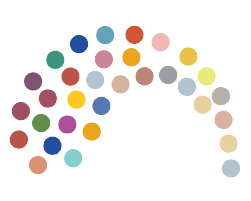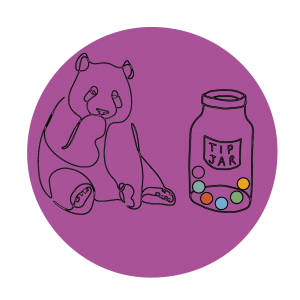Yes, WECAN! | Osprey Orielle Lake
It’s been a man’s man’s man’s world. Now it’s time to lift up the women who will save it. In this episode: our interview with Osprey Orielle Lake, founder and executive director of the Women’s Earth and Climate Action Network (WECAN) International, and the impact women are making worldwide for climate justice. (33m 26s)

Osprey’s Bio
Osprey Orielle Lake is the Founder and Executive Director of the Women’s Earth and Climate Action Network (WECAN) International, working nationally and internationally with grassroots and frontline women leaders, policy-makers, and diverse coalitions to build women’s leadership, climate justice, resilient communities, and a just transition to a decentralized, democratized clean energy future. Osprey is the Co-Director of the Indigenous Women’s Divestment Delegations, and actively leads WECAN International’s projects — from various trainings and work to shift the narrative on climate justice using a feminist lens, to engagements at United Nations climate conferences — from frontline delegations and direct actions, to campaigns such as the ‘Women for Forests’ program. Osprey was the visionary behind the International Women’s Earth and Climate Summit, which brought together 100 global women leaders to draft and implement a ‘Women’s Climate Action Agenda’, and co-founded the International Women’s Earth and Climate Initiative (IWECI), the precursor initiative of WECAN International. Osprey is honored to serve on the Executive Committee for the Global Alliance for the Rights of Nature, and has been a core organizer of various International Rights of Nature Tribunals. She has served on the board of the Praxis Peace Institute and on the Steering Committee for The UN Women’s Major Group for the Rio+20 Earth Summit. Awards include National Women’s History Project Honoree, Taking The Lead To Save Our Planet, the Woman Of The Year Outstanding Achievement Award from the California Federation Of Business And Professional Women, and the Be the Dream Lifetime Achievement award. Osprey’s writing has been featured in publications including The Guardian, Common Dreams, Earth Island Journal, The Ecologist, OpenDemocracy, and EcoWatch, and she is the author of the award-winning book,’Uprisings for the Earth: Reconnecting Culture with Nature’.
Visit WECAN International’s Website
Stats and Further Reading from WECAN International
Unleashing the Power of Women in Climate Solutions:
- Globally, women are responsible for half of the world’s food production. In most Global South countries, women produce between 40-80% of food, and are are central stewards of seeds and agricultural biodiversity. UN Food & Agricultural Organization. Women and Sustainable Food Security.
- Women’s involvement in decision-making has important implications for climate change – a recent study of 130 countries found that countries with higher female parliamentary representation are more prone to ratify international environmental treaties. Norgaard and York. Gender Equality and State Environmentalism: Gender and Society. 2005. Women in the United States are more likely than men to believe in climate change science. Scientific American. Women More Likely Than Men to Believe the Science on Global Warming. 2010.
- Women and girls are responsible for collecting water in almost two-thirds of households in developing countries and hold vital knowledge of local water systems and stewardship practices. The UN has repeatedly recognized that effective sustainable water resource management depends on engaging women at all levels of decision-making and implementation. It is now recognized that the exclusion of women from the planning of water supply and sanitation schemes is a major cause of their high rate of failure. UN Water. Gender, Water and Sanitation: A Policy Brief. 2006. + UN Water. Gender and Water. 2015
- Involving more women participants in management and decision making surrounding local forests is related to significantly greater improvements in forest conditions and conservation. UN Food & Agricultural Organization. Women in Forestry: Challenges and Opportunities. 2014. + Agarwal B. Does Women’s Proportional Strength Affect their Participation? Governing Local Forests in South Asia. World Development. 2010;38(1):98-112.
- When allowed to actively participate in disaster planning and response, women show a unique and vital knowledge base and set of skills for effective community rescue, support, rebuilding and conflict management. United Nations Development Programme. Gender and Disaster Risk Reduction. 2013.
- In Global North countries, women have been found to be more likely to recycle, buy organic food and eco-labeled products and place a higher value on energy-efficient transport. Organization for Economic Co-operation and Development. Gender and Sustainable Development: Maximizing the Economic, Social and Environmental Role of Women. 2008.
- Women in North America now control over half of the wealth, are behind 80 percent of all consumer purchases, and start 70 percent of new businesses in the U.S.- power which could be leveraged into the transition to clean energy and local economies. Female Factor. Women in the Economy.
- Research in Europe attests that women express more concern about climate change than men, and are more willing to make sacrifices to reduce emissions. European Commission. Attitudes of European Citizens Towards the Environment. 2014.
- Electing women politicians in national parliaments leads countries to adopt more stringent climate change policies, which results in lower carbon dioxide emissions. European Journal of Political Economy, Volume 56. Gender and climate change: Do female parliamentarians make difference? 2019.
- 80% of remaining global biodiversity is within the lands of global Indigenous peoples who have protected them over generations. Indigenous women are at the forefront of local and global efforts to protect and defend these territories of immense socio-ecological diversity – taking action on the frontline of grassroots movements and struggles, and within international climate negotiations and political processes. Due to their close relationship with the land, Indigenous women hold unique and invaluable Traditional Ecological Knowledge, as well as spiritual and philosophical understandings critical to healing and maintenance of the Earth’s climate and cycles. World Bank. The Role of Indigenous Peoples in Biodiversity Conservation. 2008. + National Observer. Indigenous Latin American Women Craft Climate Solutions in Marrakech. 2016. + Cultural Survival. Collaborative Science with Indigenous Knowledge For Climate Solutions. 2017. + Native Women’s Association of Canada. Aboriginal Women and Aboriginal Traditional Knowledge. 2010. + The Guardian. Indigenous Knowledge Systems Can Help Solve The Problems of Climate Change. 2017.
The Disproportionate Impact of Climate Change on Women:
- Women make up upwards of 80 percent of climate refugees. 2009 studies report that women comprise 20 million of the 26 million people estimated to have been displaced by climate change. Women’s Environmental Network. Gender and the Climate Change Agenda: The Impacts of Climate Change on Women and Public Policy. 2010.
- The poor are especially vulnerable to the effects of climate change, and the majority of the 1.5 billion people living on $1 a day or less are women. United Nations Population Fund. State of World Population 2009: Facing a Changing World, Women, Population and Climate. 2009.
- In a sample of 141 countries over the period 1981–2002, it was found that gender differences in deaths from natural disasters are directly linked to women’s economic and social rights. In inequitable societies, more women than men die from disaster. Neumayer and Plumper. The Gendered Nature of Natural Disasters: The Impact of Catastrophic Events on the Gender Gap in Life Expectancy, 1981–2002. 2007. Annals of the Association of American Geographers 97(3). 2007.
- Women and children are 14 times more likely than men to die during a disaster. Women accounted for 61 percent of fatalities caused by Cyclone Nargis in Myanmar in 2008, 70–80 percent in the 2004 Indian Ocean tsunami, and 91 percent in the 1991 cyclone in Bangladesh. United Nations Development Programme. Gender and Disaster Risk Reduction. 2013.
- Women in Global South nations engage disproportionately in subsistence farming and fuel and water collection. As droughts, floods and other erratic weather events increase, there will be an increased burden on women holding responsibility for their families food water and energy needs. UNFPA. State of the World Population 2009: Facing a Changing World, Women, Population and Climate. 2009. + InterPress Service. Women Spend 40 Billion Hours Collecting Water. 2012.
- During and after disasters, levels of sexual and gendered violence often increase. After two tropical cyclones hit Tafe Province in Vanuatu in 2011, the Tanna Women’s Counselling Centre reported a 300% increase in new domestic violence cases. Human trafficking has been found to increase 20 to 30 percent during disasters. United Nations Women. Why Is Climate Change a Gender Issue?. 2014. + UNEP Women at the Frontline of Climate Change – Gender Risks and Hopes, 2011.
- When extractive industries begin operating in communities, women often face sharp increases in sexual violence, human trafficking and other gender-based abuses. Indigenous women and women of color face severely disproportionate targeting and abuse. Honor the Earth. Man Camps Fact Sheet. + EcoWatch. Women on the Frontlines Fighting Fracking in the Bakken Oil Shale Formations. 2016. + Women’s Earth Alliance. Violence on the Land, Violence on Our Bodies. 2016.
- After climate disasters, women experience disproportionate and specific health vulnerabilities including impaired psycho-social health, increased vulnerability to insect-borne and infectious disease and other health impacts. These not only affect women’s health directly, but also increase their “burden of care” when looking after ill and injured dependents and family members. World Bank. Making Women’s Voice Count Addressing Gender Issues in Disaster Risk Management in East Asia and the Pacific. 2012.
- Women and children are generally more susceptible to the harmful effects of environmental toxins and pollutants. UNDP Environment and Energy Group. Chemicals and Gender. 2011. + Live Science. How Environmental Toxins Harm Women’s Reproductive Health. 2013. + Global Health Action. Climate Change and the Potential Effects on Maternal and Pregnancy Outcomes: An Assessment of the Most Vulnerable. 2013. +Women in Europe for a Common Future. Women and Chemicals: The Impact of Hazardous Chemicals on Women. 2016.
Inequities:
- A World Bank survey in 141 countries showed that 103 countries continue to impose legal differences on the basis of gender that may hinder women’s economic opportunities. Inequities and constraints in the legal, political, economic and social sphere limit women’s mobility and increase vulnerability to climate impacts. United Nations Development Programme. Overview of Linkages Between Gender and Climate Change. 2015.
- As of 2012, the average percentage of women delegates to the United Nations Framework Convention on Climate Change was 36%. Out of this, the average number of women who participated as Heads of Delegations was 24.5%. Women’s Environment and Development Organization. New Statistics on Women’s Participation in the UNFCCC. 2012.
- A 2015 study covering 881 environmental sector ministries from 193 countries found only 12 per cent of the environmental ministers were women. United Nations Women. Women Leading Climate Action.
- Women face challenges and roadblocks in accessing all levels of policy and decision-making processes, rendering them less able to influence the policies, programs and decisions that impact their lives and survival on a daily basis. United Nations Development Programme. Overview of Linkages Between Gender and Climate Change. 2015.
- Women account for only 20 – 25 per cent of the workforce in the modern renewable energy sector. Action is needed to support women in STEM careers to bring women’s innovation to this growing field. International Renewable Energy Agency. Renewable Energy and Jobs Annual Review 2016. 2016.
- Worldwide, women farmers feed the world (accounting for 40-80 percent of all food production) but own less than 10% of land. Women also have less access than men to agricultural assets, inputs, supports and services. Evidence indicates that if these women had the same access to productive resources as men, they could increase yields on their farms by 20 to 30 percent. IUCN, UNDP, GGCA. Training Manual on Gender and Climate Change. 2009. + United Nations Food and Agricultural Organization. The State of Food and Agriculture 2010-2011. 2010. + United Nations Women. Rural Women and the Millennium Development Goals.
- Much of women’s work in and outside of the home is not recognized, resulting in ‘time poverty’. ‘Time poverty’ may increase with climate change, as it will become more difficult and takes more time for women to secure water, food, and fuel for cooking and heating. Such increased burdens and expectations reduce women’s ability to engage in opportunities for income-generating activities or education. Food and Agricultural Organization. Gender Equality and Food Security – Women’s Empowerment as a Tool Against Hunger. 2013.
- Women in Global North countries have a much greater carbon footprint than women in the Global South. The wealthiest 20 percent of the world’s population consumes 86 percent of the world’s goods and services, and women in the Global North are deeply implicated in over-consumption, waste and associated climate impacts. WorldCentric. Social & Economic Injustice.
Related Episodes
Ep. 22, “Rivers with Rights” | Joseph Bonasia and Gary Robbins




